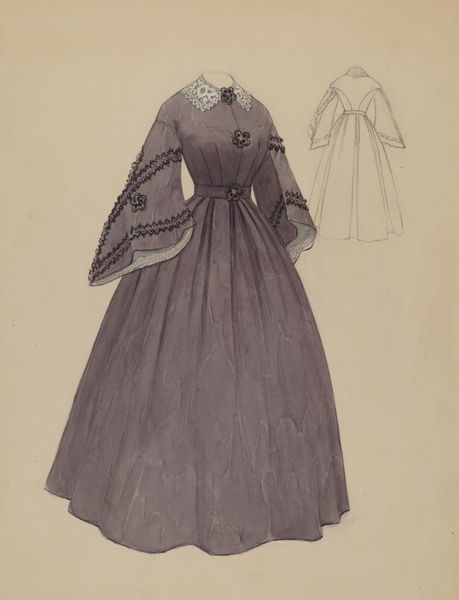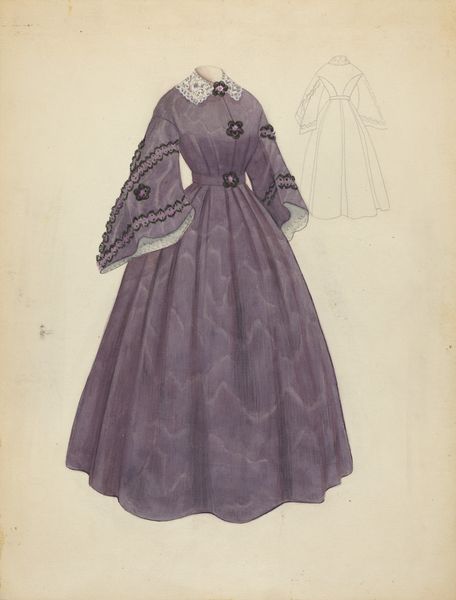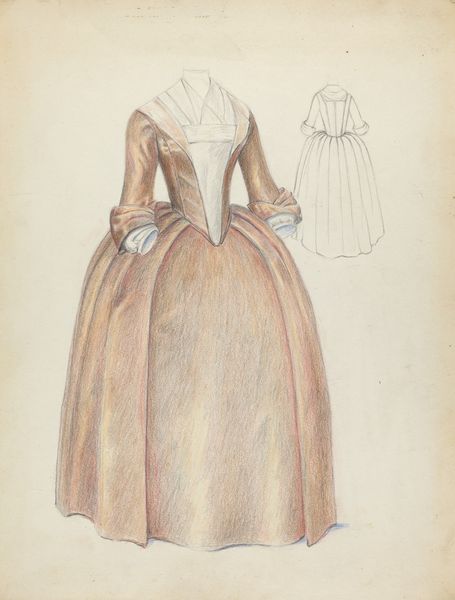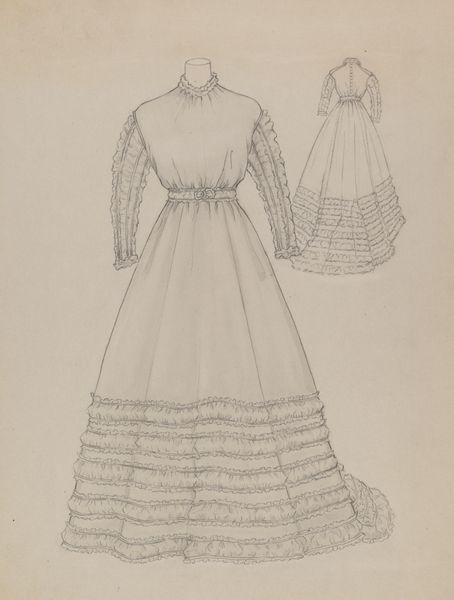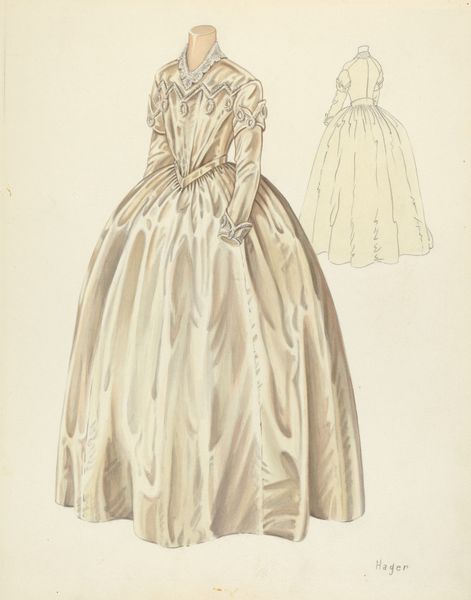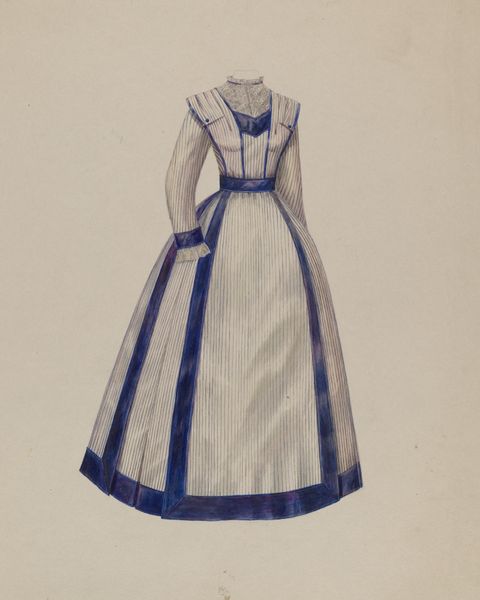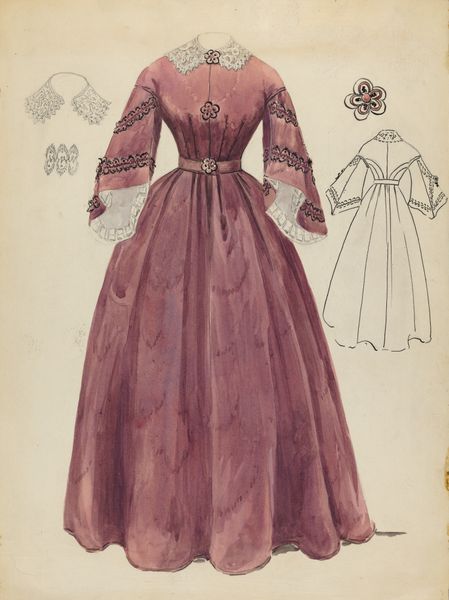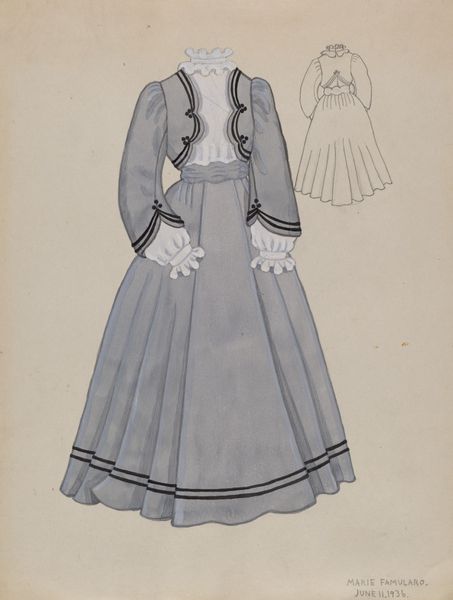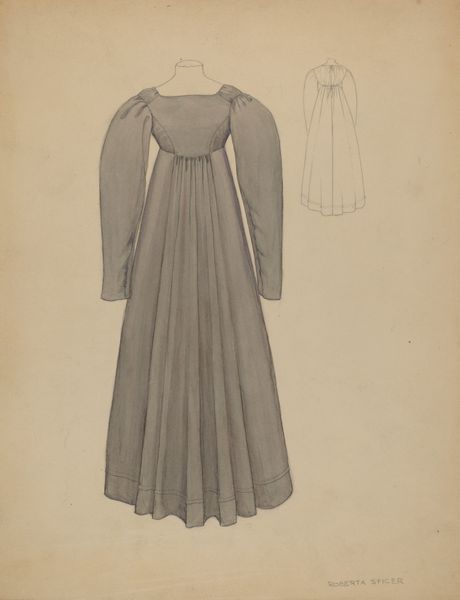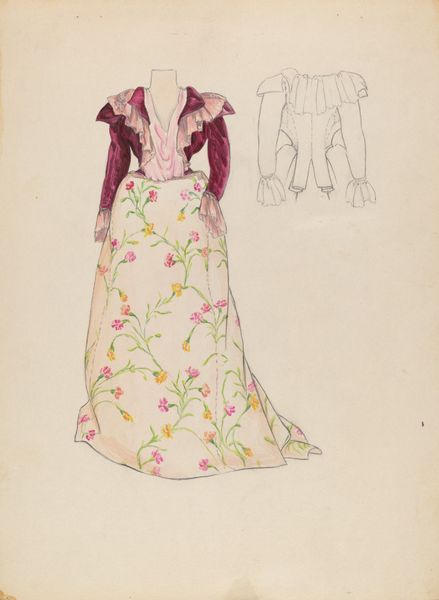
drawing
#
portrait
#
fashion design
#
drawing
#
underwear fashion design
#
fashion mockup
#
collage layering style
#
fashion and textile design
#
historical fashion
#
wearable design
#
traditional dress
#
fashion sketch
#
clothing design
Dimensions: overall: 29.3 x 22.6 cm (11 9/16 x 8 7/8 in.)
Copyright: National Gallery of Art: CC0 1.0
Editor: Here we have Sara Garfinkel’s “Quaker Dress,” a drawing from around 1936. The simple form of the dress, almost a study in geometry, strikes me. What catches your eye in this piece? Curator: Note how the composition relies heavily on the interplay of line and form. The precise rendering of the dress’s structure and the subtle modulation of color, particularly the muted lilac, serve to define its aesthetic value. Do you observe how the artist employs contrasting drawing styles between the primary dress and the fainter secondary image? Editor: Yes, I see it! The first one seems to have more defined lines and color. Why do you think she made that decision? Curator: This deliberate contrast emphasizes the dress’s construction and its individual components. The precise linework draws attention to the sartorial structure, creating visual interest, while the restrained palette suggests a particular aesthetic. Note, also, the almost diagrammatic representation – we could view this piece through the lens of structuralist thought, decoding the garment into a series of signifiers. Editor: That’s fascinating! So, it’s not just a pretty drawing; it’s communicating something about form and construction. Curator: Precisely. It underscores the interplay of visual elements, focusing on the intrinsic aesthetic qualities of line, form, and color rather than relying on contextual narratives. This focus on the purely visual aligns with formalist principles, emphasizing the work's internal relationships. Editor: I see that now! It's been eye-opening to look at the dress in this way. Thanks for the formalist reading. Curator: A valuable exercise! Formal analysis refines our vision.
Comments
No comments
Be the first to comment and join the conversation on the ultimate creative platform.
